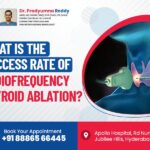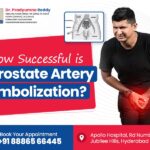Peripheral artery disease often termed as the peripheral arterial disease or peripheral vascular disease because arteries may be affected.
PAD is a common circulatory problem where the narrowed blood vessels reduce the flow of blood to your arms, kidneys, stomach and most frequently to your limbs.
Healthy arteries possess smooth lining inside the blood vessels to prevent the blood from clotting and for a steady flow. In PAD condition, the plaque, made up of fat and cholesterol accumulates on the walls of the arteries, and slowly they become narrowed or blocked.
As a result, it reduces or prevents the blood flow, and in severe cases, the blocked blood can kill the tissues and sometimes it leads to amputation of the parts.
PAD is a progressive condition, and rate of progression varies from person to person based on many factors, including the area of plaque formation and the person’s overall health. People with PAD are more prone to coronary artery disease, heart stroke.
Symptoms Of Peripheral Artery Disease
Many people with peripheral artery disease have no symptoms, while others have mild symptoms. People PAD have leg pain while walking called claudication. Symptoms of claudication include muscle pain or cramps in legs or arms while walking. It disappears after resting some time.
The precise location of the pain based on the place where the blood vessels are clogged. Pain varies from a mild ache to severe pain. In severe cases, you may not be able to walk or perform other physical activities.
- Pain in your hips, thighs and calf muscles
- Numbness or weakness in legs
- You may feel cold in your lower legs or foot
- Sores or ulcers on your legs, feet or toes that take more time to heal
- Brittle toenails and also grow slowly
- Colour changes in your legs
- Hair loss or slower hair growth on your feet and legs
- Shiny leg skin
- Slower hair growth or hair loss on your legs
- Erectile dysfunction in men
- You may not find the pulse in your legs
If PAD progresses, you may experience pain even when you are at rest or lying down. Hanging down your legs from bed edge or walking might relieve the pain temporarily.
Causes Of Peripheral Artery Disease
Atherosclerosis is the most common cause of PAD. It is a progressive condition in which fat is built up inside the arteries. Blood clots in the arteries, injuries to your limbs, inflammation of the blood vessels and unusual muscles and ligaments anatomy and radiation exposure are less common causes of peripheral artery disease.
Risk factors which increase the risk of developing PAD include:
- Habit of smoking
- Diabetes
- Obesity (BMI over 30)
- High blood pressure
- High cholesterol
- Increasing age – above 50 years
- Hereditary
- A family history of heart disease or stroke
- Excessive homocysteine – C-reactive protein that helps to build tissue
Of all risk factors, smoking and diabetic people are at greatest risk of developing PAD – peripheral artery disease because of reduced blood flow.
How To Diagnose Peripheral Artery Disease?
There are many ways to diagnose peripheral artery disease if you are suspected of having this disease. The ankle-brachial index is the most common diagnostic test for PAD. some other diagnostic tests include:
- blood tests
- Doppler and ultrasound (Duplex) imaging
- Computed tomographic angiography (CT)
- Magnetic Resonance Angiography (MRA)
- Angiography
Undiagnosed or untreated peripheral artery disease may lead to painful symptoms, increased risk of coronary artery disease(CAD), and carotid atherosclerosis (the arteries which supply blood to your brain becomes narrow).
Treatment For Peripheral Artery Disease
The main goal of PAD treatment is to manage symptoms and prevent the progression of atherosclerosis. To achieve these goals, you need to change your lifestyle and your habits.
- You need to quit smoking
- Take a well-balanced diet that is rich in fibre and low in cholesterol, fat and sodium
- Begin to exercise regularly program like walking
Along with the above, you should manage some other health conditions like high blood pressure, diabetes and high cholesterol.
If the condition advances, your doctor may suggest some medication to lower your cholesterol, to control blood pressure and blood sugar levels. Some medicines help to prevent blood.
Angioplasty And Stenting
If the above treatment options fail to improve the condition, your doctor prefers Angioplasty of your narrowed blood vessels.
Angioplasty
The procedure involves inserting a small hollow tube called a catheter to the affected artery through your blood vessel. A small balloon is inflated, which helps to flatten the blockage and to increase the blood flow.
Sometimes the doctor might also insert a mesh or stent in the artery to prevent closing again.
Thrombolytic Therapy
If you are diagnosed with any blood clots blocking an artery, the Interventional Radiologist might inject a drug into your artery to dissolve the clot.
Untreated PAD increases the risk of life-threatening complications like a heart attack. Early treatment is the best way to prevent complications. To know more information about treatment options, consult Dr. Pradyumna Reddy, a renowned Interventional Radiologist in Hyderabad.





